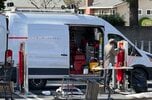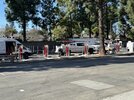Mrbrock
Well-Known Member
Your comment is vague. Please explain why a V3 SC needs these boards “to enable non Tesla vehicles to charge.” Right now, and for the remainder of 2024, Tesla is the only brand with NACS ports. The rush to install these boards now is strictly for CCS cars with adapters. They covered the entire state of Washington in 2 weeks. They aren’t doing that for MY 25 or 26 vehicles.I disagree. The burden of NACS compatibility for V3 Superchargers is completely on Tesla's side. A CCS vehicle with a NACS adapter is likely to be indistinguishable from a native NACS vehicle as far as a charging station is concerned.
Here is an inspection report for a station.




